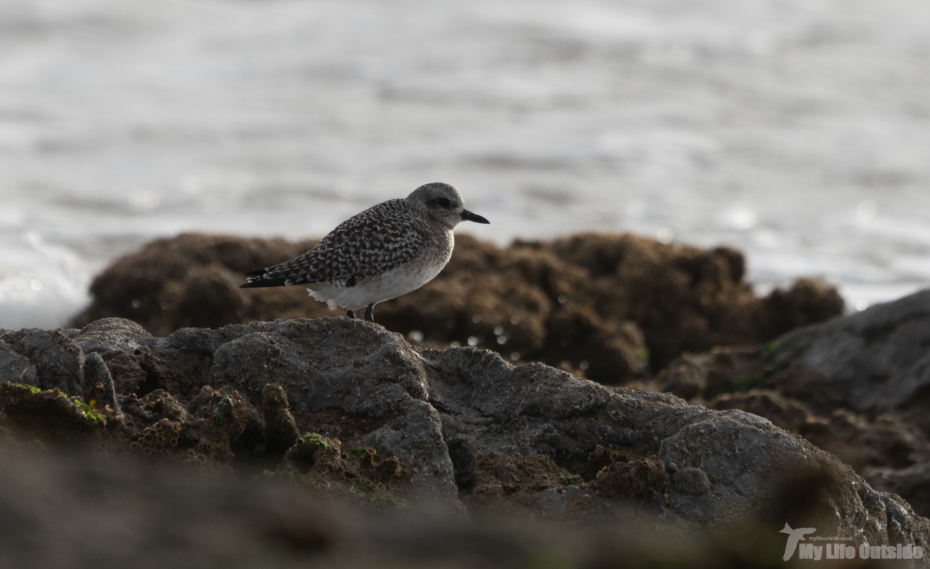
The RSPB rather nicely sent me a reminder email last week that I’d yet to submit this year’s Big Garden Birdwatch results. Given that the count took place over a fortnight ago this seemed entirely reasonable and has prompted me into action, with this evenings ramblings the result. For those who don’t know (and surely everyone must by now), the Big Garden Birdwatch is the world’s largest wildlife survey and last year saw submissions from over half a million people. In a world increasingly detached from nature that’s a hugely impressive number and added a significant amount of data to that already collected over the last thirty five years. I’m proud to say that I’ve been taking part for probably the last twenty years at least in various properties across England and Wales, and have blogged my results here from 2011, 2014, 2015 and 2016. Over that time we’ve observed several changes such as a downward trend in Chaffinch numbers to the complete loss of Starlings altogether. On the flip side our Goldfinch population has absolutely rocketed from nothing in 2011 to a peak of thirty five birds earlier this year. There’s also been the steady growth in sightings of Bullfinches, but who would turn up in 2017?
As has typified survey weekends in recent years, weather conditions were definitely at the dull and moist end of the spectrum. This once again ruled out my dream of photographing each species that visited but having topped up the feeders a couple of days earlier we were still hopeful of a good showing. Indeed things got off to a cracking start with four Bullfinch (two pairs) and a trio of Robins adding a little splash of colour to proceedings. It was particularly pleasing to record the former as they really have been getting more and more common in our area. Just look back at my early Patchwork Challenge postings to discover how difficult it used to be to track down just one, let alone a whole group. These were quickly joined by the rest of our regulars including Blue Tit, Great Tit, Coal Tit and Long-tailed Tit, plus up to six Goldfinch. If we could have counted fly-over birds as well then we’d have been laughing as Magpie, Crow, Red Kite, Buzzard, Raven, Lesser Black-backed Gull and Herring Gull all featured, but alas none touched down. Not to worry as a couple of minutes from the end of our hour we had an absolute star moment as two Siskins dropped in. Not only are these my first of the year for the garden, they are also my first of the year full stop and both stuck around for a good while gorging on Sunflower hearts. This does of course raise the question as to if this was a sheer stroke of good fortune or if they’ve been popping by on and off and we’ve just not noticed. Personally I favour the latter and shall be keeping a close eye out now that we’re not going to and returning from work in the dark.
By the end of our allotted hour we’d recorded thirty two individuals across thirteen species with the full breakdown as follows:

| Bullfinch (4) Robin (3) Goldfinch (6) Blue Tit (4) Long-tailed Tit (1) Great Tit (1) Coal Tit (2) | Wren (1) Dunnock (2) Jackdaw (2) Siskin (2) Blackbird (2) House Sparrow (2) |
This equals our record from 2016 where we also recorded thirteen species, though not the same thirteen interestingly, and it’s quite noticeable that House Sparrows have slipped from being our most numerous visitor to one of our least. That fits with a general country wide decline but I’m happy to say that a few more have turned up recently, including one particular male which seems to delight in calling from right next to our bedroom window. Not what you want early on a Sunday morning I can tell you.



1 Comment
Caroline Gill · February 17, 2017 at 10:37 am
A brilliant result, Adam. I'm particularly interested to see that you had one Long-tailed Tit, firstly because they almost always come in pairs or small flocks to our Suffolk garden, and secondly because the only place I saw these lovely birds in South Wales was high, high up in the poplars at WWT Llanelli (Penclacwydd) – where they were little more than a speck in my binoculars.